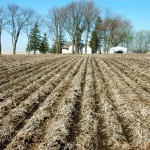
Where do you cut when you have to cut costs?
As crop prices drop, growers have a new focus on cost containment. Weed control is always a big bill, so it’s only natural this gets a hard look — but taking the wrong steps could cost you money

We need to get our herbicide resistance response right
Dealing with what's become a global problem could end up being one of Canada's key competitive advantages as a grain-exporting nation

Head of G3 promises to shake up Canada’s grain industry
Karl Gerrand thinks high-speed logistics are the answer to moving grain. But will his competitors play nice?

Unique farmer-driven funding model achieving the ‘im-pulse-able’
The Prairie pulse sector has developed from a few hundred acres to a few million

Corn isn’t just about crop heat units
New shorter-season hybrids are just part of the Prairie corn picture. Just as important will be the local research to fine-tune how they’ll fit into the production system

Are Canadian farmers becoming more European?
Canada’s farmers are getting more and more regulated. Do we have to become just like Europe?

Fabulous fababeans
Good results for the past few seasons have led to increased interest in fababeans, but like any new crop, there are still a few hurdles to clear

Big data in Canadian agriculture? Not yet
Precision agriculture proponents are convinced that the technology will pay off, but that data collection needs to be standardized and not require farmers’ time during the busy seasons

Global grain markets and the global downturn
There’s no major rebound in sight for grain markets, but that doesn’t mean you can’t still take charge of your own fate

Getting that farm data working in the field
Some big ag players and Silicon Valley investors are convinced that precision agriculture and ‘big data’ are the next big things. Convincing farmers is another matter


